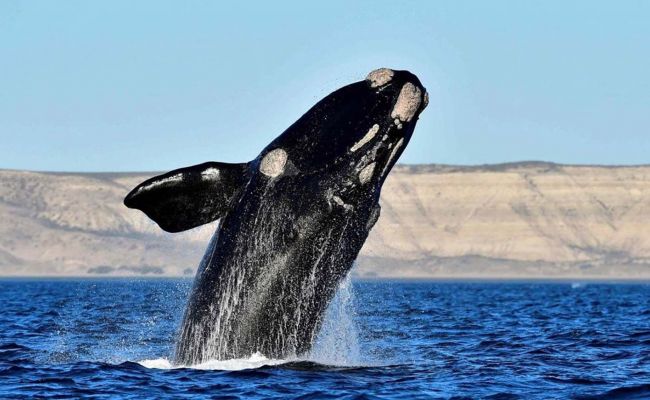Península Valdés, located in the Chubut Province of Argentine Patagonia, is a breathtaking peninsula extending into the Atlantic Ocean. It is one of South America’s most important wildlife reserves, known for its rich biodiversity and spectacular scenery. Península Valdés, a UNESCO World Heritage Site since 1999, protects a diverse range of marine and terrestrial species. This includes the southern right whale, orcas, sea lions, elephant seals, and a variety of bird species. The peninsula’s distinct geographical features, including arid plains, salt flats, and sheer coastal cliffs, offer a broad range of habitats that support its thriving natural population. Península Valdés is a leading eco-tourism and scientific research site that promotes conservation and sustainable tourist practices.
History
Península Valdés, located in the Chubut Province in Argentine Patagonia, has a rich history dating back thousands of years. The indigenous Tehuelche people originally inhabited the territory, prospering from its abundant marine and terrestrial resources. It eventually became a focal point for European explorers in the early 16th century, and it was named after Spanish naval officer Antonio Valdés y Basán. Significant European colonization occurred in the late nineteenth and early twentieth centuries, when Welsh, Italian, and Spanish immigrants established towns and engaged in sheep farming and fishing, causing environmental changes. Península Valdés was named a UNESCO World Heritage Site in 1999, recognizing the area’s biological value and conservation efforts in the mid-20th century. Today, it is a top destination for eco-tourism and animal viewing, balancing human activity with continued attempts to protect its biodiversity and natural beauty.
Integrity
The peninsula forms a naturally defined unit of the Patagonian landscape. It encompasses all terrestrial environments with their outstanding flora and wildlife, as well as the very valuable coastal habitats. The Tehuelche were the area’s original inhabitants, living off the land and sea before colonization. Later, sheep ranching emerged as the primary land use, with the heavy exploitation of marine creatures serving as an additional source of employment and income. Despite continued sheep grazing and the resulting rivalry between livestock and native herbivores, as well as the persecution of native predators, the site continues to maintain diverse native flora and wildlife communities. The property is lightly populated, and the infrastructure is minimal. Except for an aluminum smelter in the town of Puerto Madryn, which is located on the mainland but on the beach of Golfo Nuevo, no industrial development has taken place.
Overfishing had historically brought the Southern Right Whale population dangerously close to collapse, but global protection finally arrived in 1935. On the peninsula, people frequently hunted the Southern Sea Lion for oil and skins, both legally until 1953 and illegally until the 1970s. Both species’ numbers have recovered dramatically as a result of conservation efforts.
The sea areas are also preserved. Despite its excellent general level of conservation, the property demonstrates some of the inherent limits of protected areas. Peninsula Valdes is world-renowned for its charismatic species, all of which are seasonal visitors. While the property appropriately conserves vital and sensitive habitats, it is evident that the populations’ futures rely on acceptable and intact habitats elsewhere.
Protection and management requirements
Protecting and managing Península Valdés requires a diverse approach to maintain its unique biodiversity and ecological integrity. As a UNESCO World Heritage Site, it is subject to tight regulations designed to reduce human damage while fostering sustainable tourism and conservation initiatives. Key initiatives include the creation of protected zones on the peninsula to protect critical habitats for species including the southern right whale, orcas, sea lions, and a variety of bird species. Continuous scientific research and monitoring activities are required to understand and manage risks to the ecosystem, such as climate change, pollution, and habitat degradation.
Local communities and stakeholders are actively involved in conservation projects, ensuring that economic activities like tourism and fishing follow environmentally responsible methods. Education and awareness efforts are critical for instilling a conservation mindset in both visitors and residents. These extensive conservation and management measures aim to keep Península Valdés a dynamic and resilient natural sanctuary for future generations, balancing human usage with ecological preservation.
